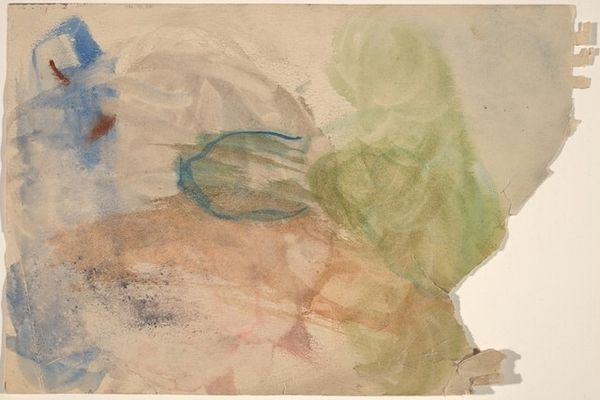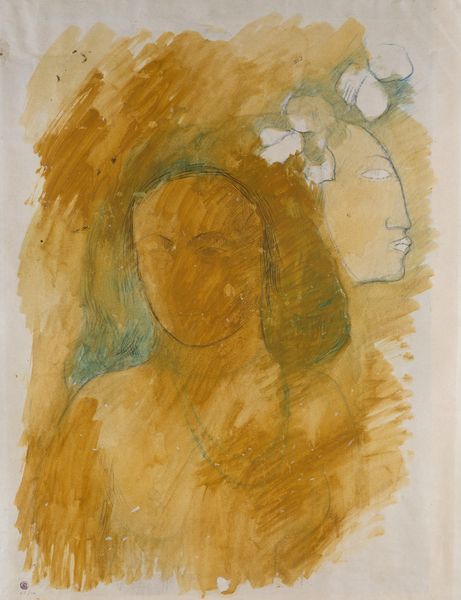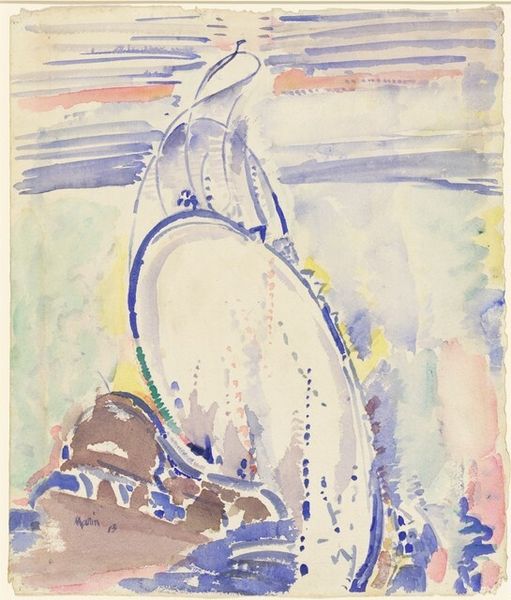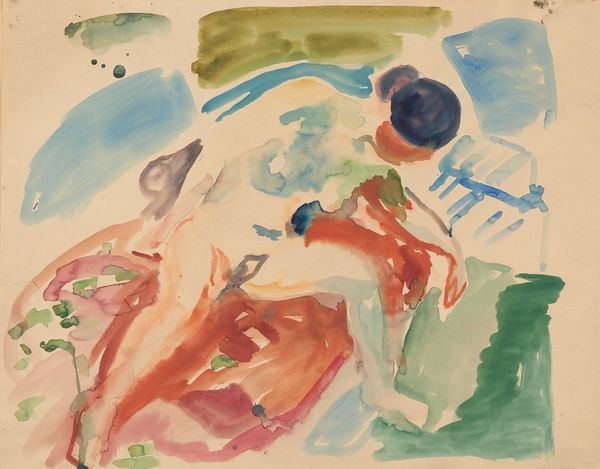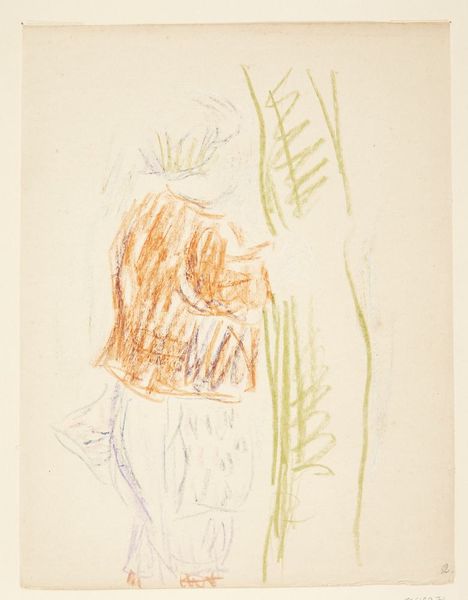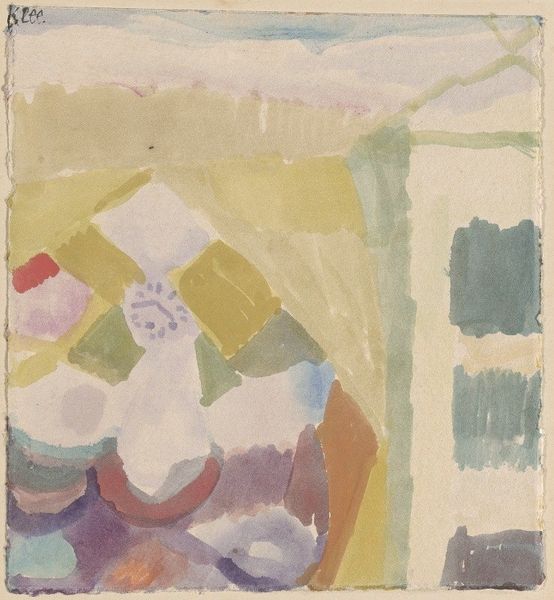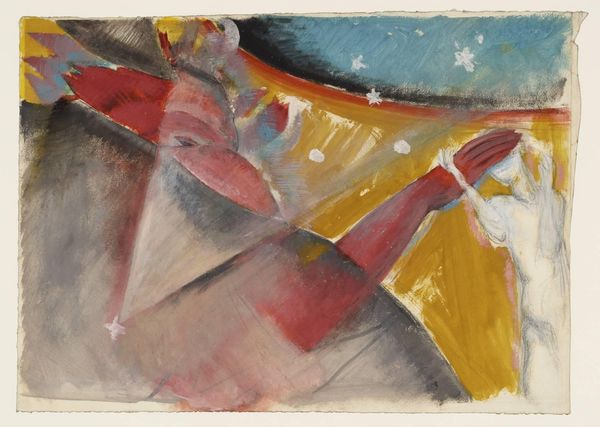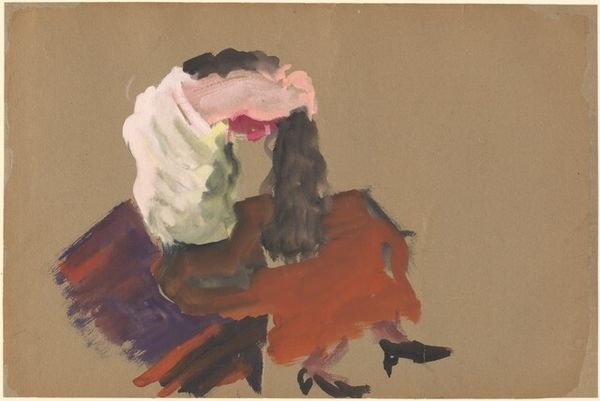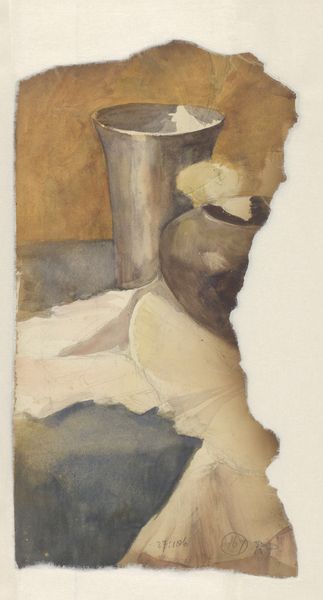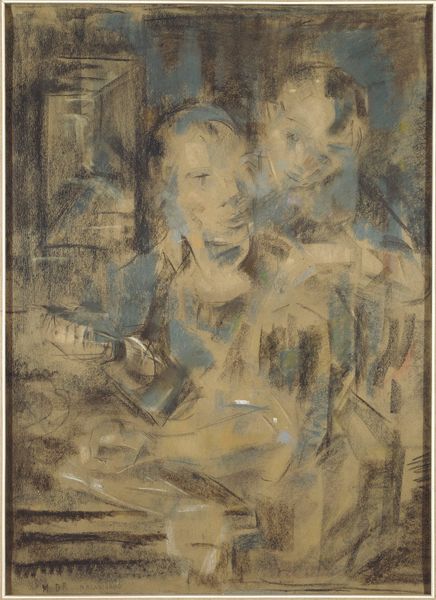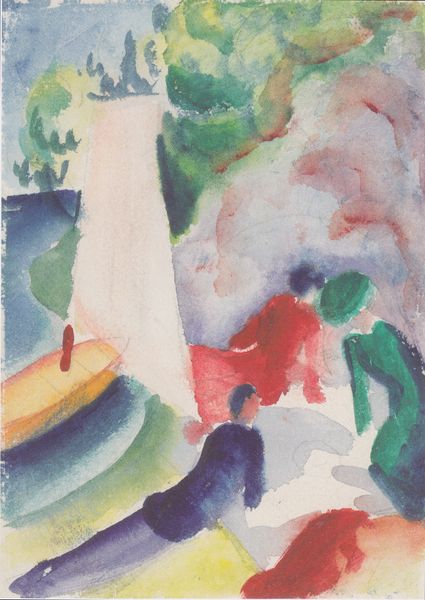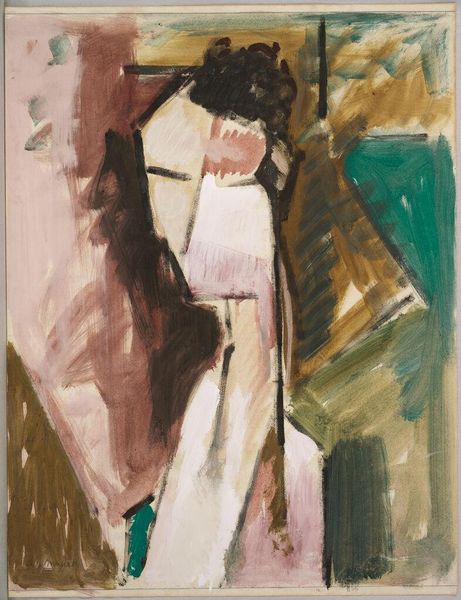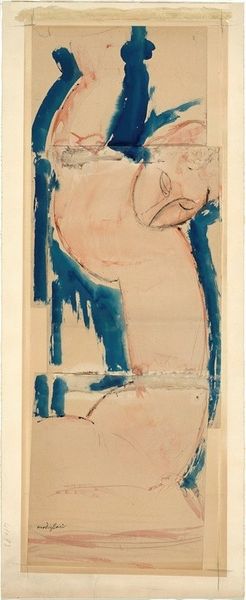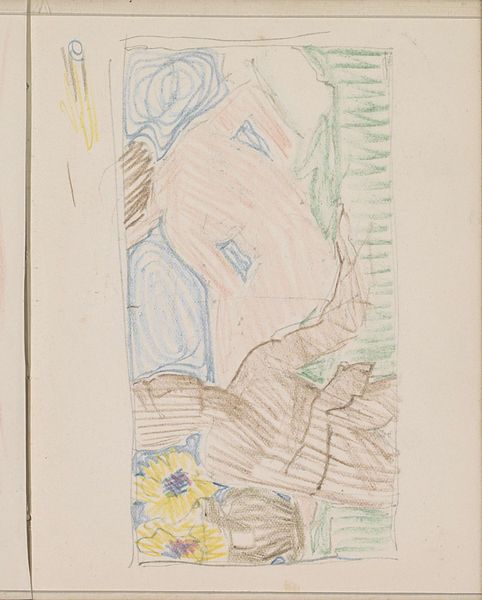
Dimensions: 450 mm (height) x 305 mm (width) (bladmaal)
Curator: Welcome. We’re looking at “Siddende dame i det fri, Sydfrankrig,” or "Seated Lady Outdoors, Southern France," created by Edvard Weie around 1935. It's currently held at the SMK, Statens Museum for Kunst. Editor: My first impression is a wash of pale light and softness. The colors are incredibly delicate, like faded memories. There’s a quiet, almost melancholic feel to it. Curator: Weie often sought to capture the essence of light and atmosphere in his plein-air works. He studied at the Académie Matisse in Paris, where he became exposed to new ideas in colour and composition. The painting's title indicates Weie created this piece en plein air in Southern France. Weie moved there after experiencing a mental breakdown; he was deemed insane and lived the remainder of his life in mental institutions. We can speculate, that this delicate play of color, therefore, may be attributed to his personal state of being. Editor: That context really shifts how I perceive the image. Knowing about his struggles, the muted tones and slightly undefined form of the woman start to read as a fragile self-portrait. This artwork invites consideration of mental health, representation, and the silencing of voices often deemed 'other' by societal standards. The woman is not quite present; the artist isn't either. Curator: Precisely. Weie's style, especially post-breakdown, veers into the emotionally expressive; but the choice of watercolour is telling as well. Typically, Weie chose his themes based on an emotional whim and developed them into motifs of more profound importance to him. Watercolor captures that fleeting quality. Editor: The act of portraying a seated figure is an historical artistic choice. This also ties into larger narratives about the role of women in art, often portrayed in passive poses for the male gaze. But in the case of Weie’s piece, it almost seems as though this woman exists outside these social constraints, enclosed in her own internal world. Curator: Yes, it appears Weie is intentionally avoiding established forms in his art by prioritizing colour and brushstroke. His art seems more oriented toward emotion, and he creates this work through a study of colour. Editor: It’s powerful how knowing even a little of Weie's biography can unlock such complex interpretations within this seemingly simple watercolor. The quiet beauty, tinged with sorrow, invites us to empathize with a figure on the periphery of both art history and society. Curator: I agree. It speaks to how even art rooted in personal turmoil can become a poignant statement. It demonstrates a capacity for expressing emotional fragility while challenging norms of representation in painting.
Comments
No comments
Be the first to comment and join the conversation on the ultimate creative platform.
